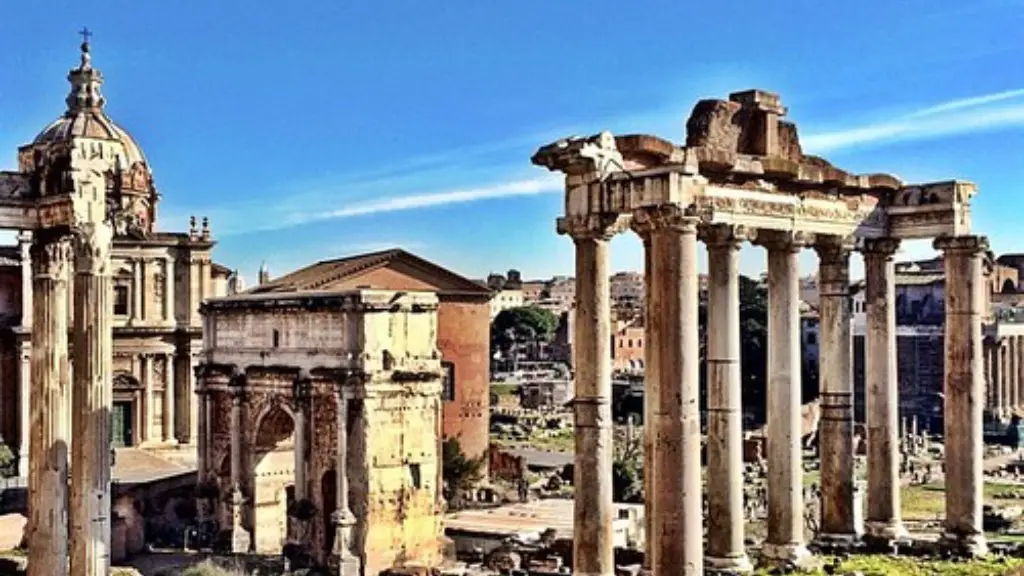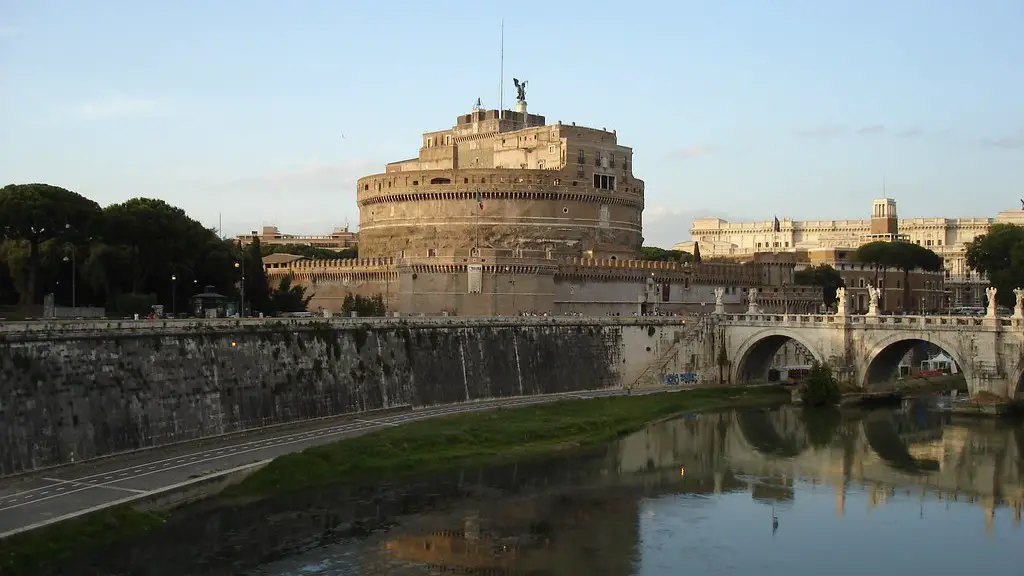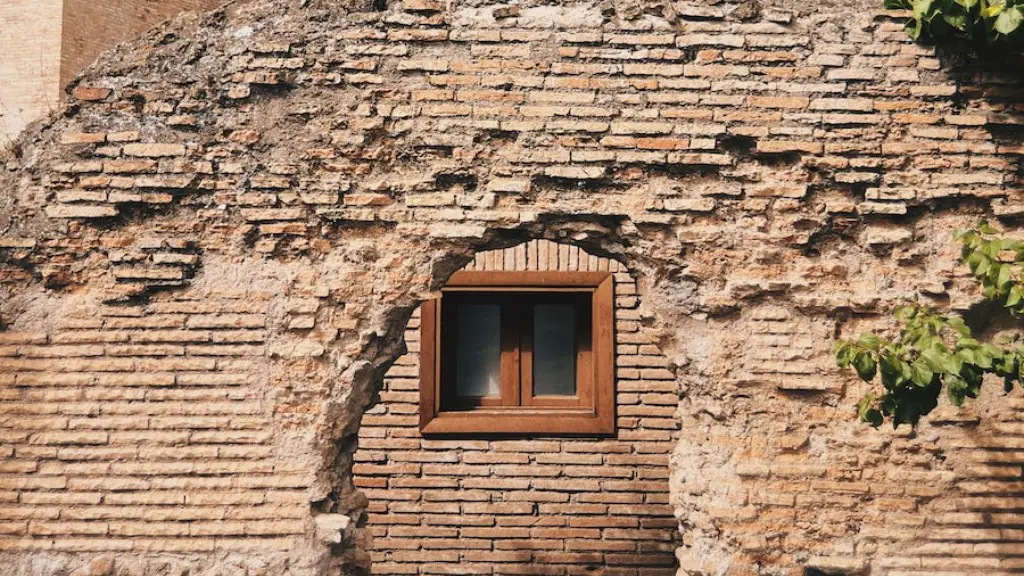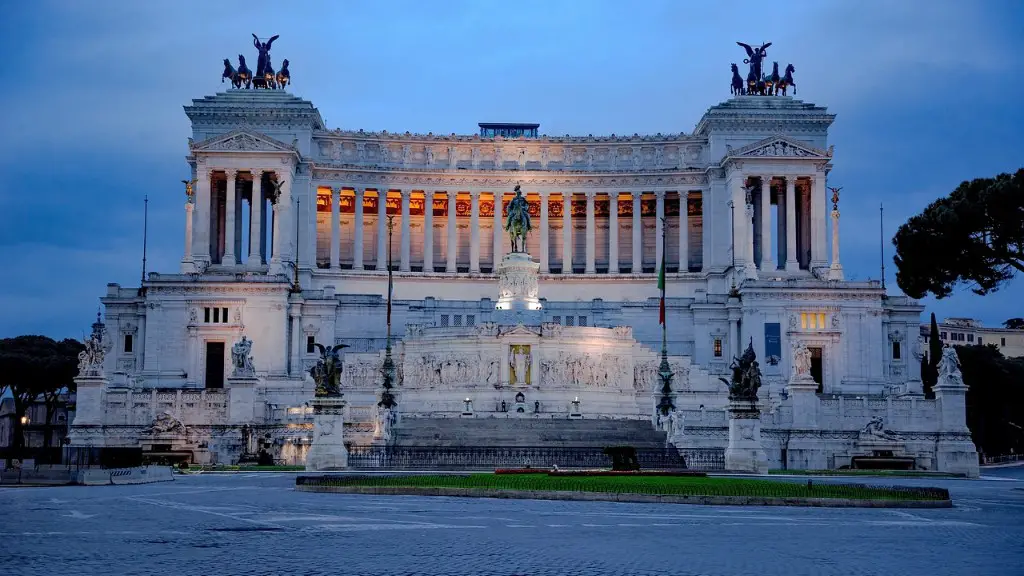Ancient Rome was one of the most powerful civilizations in human history, and its economy was built on two main factors: farming and trading. Trading allowed Rome to acquire goods and services that could not be produced at home, such as luxuries and raw materials. Roman trade was highly developed and truly international in scope. This activity also played a critical role in Rome’s global reach and sustained its unparalleled military power. So why did ancient Rome begin to trade with other regions?
Trade had a significant impact on the prosperity of Rome’s economy, which relied on imported goods, services and resources from across the known world. As a result, Rome was able to fill their coffers with coins and commodities, allowing them to have a monopoly on the luxury and food markets. In addition, the Roman Empire was able to create a strong and powerful military by utilizing the abundance of resources available to them through trading.
The Romans also traded for diplomatic reasons, as it provided them with status and recognition that was important for maintaining power and influencing foreign nations. This enabled them to project their power more efficiently and broadly and also helped to protect their borders. By utilizing their extensive network of trade routes, the Roman Empire was also able to spread their culture and religion. This provided a framework for cultural exchanges, which allowed them to gain knowledge and insight into the customs and beliefs of other cultures, while also promoting their own.
The location of Rome was also a crucial factor in the ancient city-state’s trading practices. As a port city, Rome had access to international waters with a variety of different trade routes, including the Mediterranean Sea, the Atlantic Ocean and the Black Sea. This provided the citizens of Rome with an almost limitless source of commodities, raw materials, luxuries, and new technologies. Roman traders used their access to these various trade routes to their advantage, trading with the entire known world and reaping the benefits from a wide-range of goods and services.
The Roman military was also an extremely important element in Rome’s trading practices. Ancient Rome’s military power allowed them to protect their vast empire and expand their boundaries, paving the way for trading opportunities in the future. This military power also made it possible for Rome to control the flow of goods and services, as anyone caught attempting to traffic goods without the approval of Rome was met with swift and harsh punishment.
Finally, Rome also traded for political reasons. By forging strong economic ties with other nations, Rome was able to maintain its position as a superpower and also gain allies. This allowed them to control more resources and consolidate their power, creating an intricate and lasting web of trade that extended far beyond their boundaries.
Reasons for Trading
One of the main reasons for trading with other regions was political power. This was especially the case in Ancient Rome when the borders were expanding and new territories were being acquired. There was a need to maintain a vast network of trading routes that connected Rome to other nations in order to ensure a steady supply of goods and resources, while also projecting its military strength.
Trade also provided Rome with a vast amount of knowledge and insight into the cultures of those nations they traded with, allowing them to adapt and improve how they ran their own empire. This would have been especially important when Rome was seeking to expand its borders and gain new territories.
The location of Rome also provided an advantage in terms of its ability to access various trade routes. Rome’s Mediterranean Sea neighbours provided essential goods and resources that could supplement or replace those found at home, greatly improving Rome’s efficiency in a variety of fields.
Finally, trading also provided Rome with wealth and recognition, which were essential for the success and longevity of their empire. The ability to trade and expand the boundaries of their empire provided Rome with a long-lasting period of prosperity.
Trading Relationships
Rome, like most other civilizations during the time, utilized a system of tribute and trade relationships in order to gain access to different goods and services. Tribute was a form of payment, usually consisting of gold and other commodities, exchanged between two civilizations in order to show allegiance and recognition of one another’s power. Rome had a particularly strong relationship with the Hellenistic Greek city-states, trading goods, resources and culture with one another in exchange for protection.
In addition to tribute relationships, Rome also established a variety of trading agreements, both within and outside of their own empire. These trading agreements and alliances allowed them to exchange goods, resources and knowledge that was beneficial to both sides. Rome’s trading agreements often included access to goods and resources from outside of their empire, such as exotic spices, resources and information about far-off cultures.
Finally, Rome also utilized a participatory trading system between different cities and regions. This allowed for the movement of goods and resources without the need for complex trade agreements, as goods and services moved freely across the empire’s many trade routes. This system allowed for a great deal of cultural exchange, enabling Rome to spread their culture and beliefs over large distances.
Trade Routes
Rome had a vast network of trade routes, which they used to both transport goods and services and spread their culture and beliefs. Some of the most important trade routes included the Silk Road and the Mediterranean Sea, which connected Rome to the vast network of civilizations beyond its own borders.
The Silk Road was a huge network of trading routes that stretched from China to the Mediterranean Sea. This allowed Rome to trade goods and resources from all over Asia, including the highly sought-after luxury items such as spices, fabric, and precious metals. This network also allowed for the exchange of religious, political, and cultural views, helping to integrate Rome’s ideals into the broader civilizations of the East.
The Mediterranean Sea was also an important trade route for Rome, as it provided a permanent connection to the other nations of the world. This allowed for the exchange of goods, resources, money and knowledge, and it was a critical component of Rome’s ability to expand their empire. In addition, the presence of the Mediterranean Sea also allowed for a variety of naval fights, which enabled Rome to further increase their power and protect their borders.
Impact of Trade
Trade was essential for the success of Ancient Rome and had a profoundly positive effect on their economy, social structure and culture. The vast array of goods and services that were traded allowed Rome to amass a huge amount of wealth, which allowed them to become one of the most powerful civilizations in the world.
In addition, trading allowed Rome to project their power far and wide, which was essential for maintaining control over their territories. The vast network of trade also enabled Rome to spread their culture and beliefs much further than their own borders and even gain allies with whom they could maintain advantageous relationships.
Finally, trading also enabled Rome to access new technologies and resources, which allowed them to develop new methods of warfare and greatly advance the scope and power of their military. This enabled them to become the “superpower” of their time and remain so for centuries to come.
Trade and Expansion
Trade also played a role in Rome’s expansion. By trading with nations outside of their empire, Rome was able to gain access to new resources and technologies that allowed them to improve their own cities and lands. This enabled them to create more efficient methods of farming, expand their industry and move forward in their political and religious goals. In addition, trading provided Rome with the money and resources needed to expand their military and advance their territories.
Moreover, trading also provided Rome with connections to other civilizations and countries, which helped them build alliances, protect their borders and control areas. This allowed Rome to maintain their status as an influential superpower that could impart their culture and beliefs to other nations. In addition, it helped Rome build a reputation as a political and economic force to be reckoned with, one that was incredibly difficult to oppose or go against.
Finally, trading provided Rome with a way to boost their economy. By trading with other regions, Rome was able to increase their wealth and provide citizens with a range of goods and services. This made them increasingly more prosperous, which provided them with the resources to improve their infrastructure and build a more powerful and resilient empire.
Conclusion
Trade was essential for Rome’s successes and played an integral role in their economy, military, culture, and politics. Rome’s location, political ambitions and military prowess allowed them to establish a vast network of trade routes that connected them to the rest of the known world. This enabled them to access goods and services that could not be produced at home, gain allies and project their power, allowing them to become the superpower of their time.





